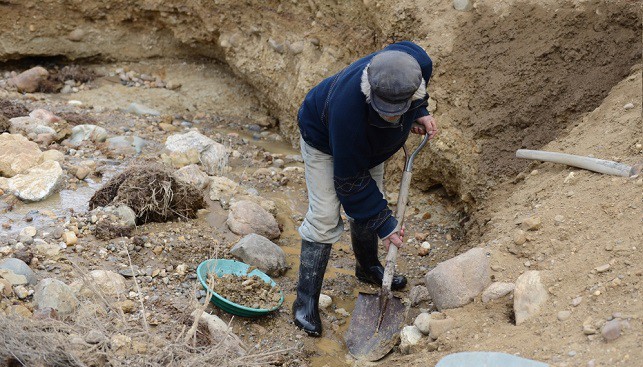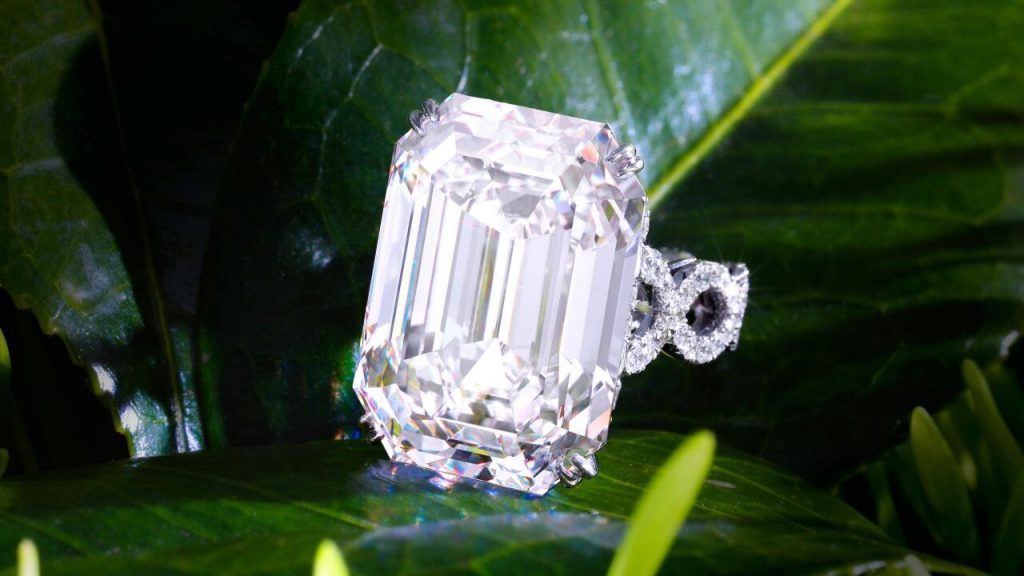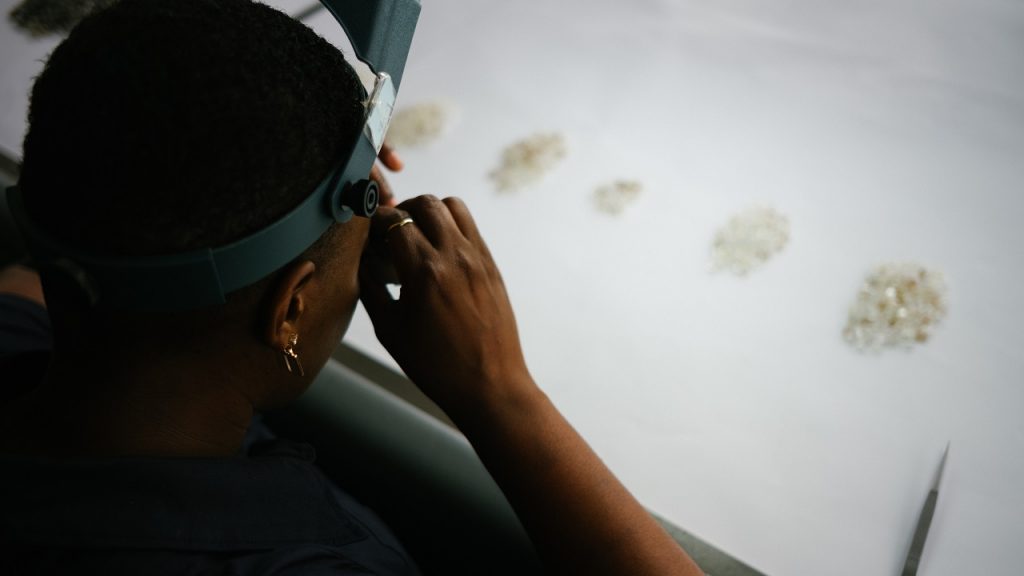
Sunday, 19 March 2023
HRD Antwerp Hits Back at ‘Upgrading’ Allegations

Wednesday, 15 March 2023
The Diamond Origin Dilemma

Russia’s invasion of Ukraine is another defining moment for the diamond industry.
On March 11, the US government banned imports of Russian diamonds. The sanctions extend to rough from Russia and stones cut and polished in the country. They do not include goods that were mined in Russia and polished elsewhere, which accounts for most of Russian supply.
The more extreme scenario would have been a ban on all Russian-origin diamonds, regardless of where they are manufactured. Such a move may still happen, the Jewelers Vigilance Committee (JVC) warned, which would cut off an estimated 28% of global resources. That polished from Russian rough can still legally be imported to the US presents the industry with a lifeline — or loophole — preventing that consequence.
Many have understandably been calling for a blanket boycott of all Russian diamonds, or to label them as conflict or blood diamonds. After all, Alrosa — the world’s largest rough producer by volume, which accounts for most of Russian production — is 33% owned by the Russian government, which initiated the war.
However, according to the classic definition, these goods cannot be labeled as conflict diamonds as they are not funding a rebel movement engaged in civil war. They’re also not stained by torture or human-rights violations carried out at a mine site.
For now, the diamonds are simply sanctioned in the US. But the crisis certainly constitutes an ethical dilemma for the industry.
It therefore highlights the industry’s traceability efforts over the past few years, and the importance of being able to track a diamond through all stages of its journey from mine to market. The programs try to begin with the mine or country where the rough is recovered, whereas the sanctions account for “substantial transformation,” meaning that the source becomes the location at which the diamond changes its form from rough to polished.
Traceability challenges
While blockchain technology has enabled an easier tracking of transactions between various stages of the pipeline, no system is foolproof.
De Beers, the Gemological Institute of America (GIA), and Sarine Technologies are among the major players that have developed programs — as is Alrosa. Last year, the Russian miner introduced its provenance program to trace its production using nanotechnology. To its credit, Alrosa has arguably been most open to the idea of advanced diamond-tracking, providing rough for both the GIA and Sarine programs, and joining De Beers’ Tracr platform in its initial stages.
The fragmented nature of the industry effort is arguably necessary as it allows for better branding opportunities, at least in De Beers’ case. A centralized traceability platform, which was Tracr’s original goal, would also create logistical and trust issues regarding who has access to data, among other obstacles.
But the existing programs are in their beginning stages and have their own shortcomings.
The most famous challenge comes from De Beers since the company aggregates, or mixes, production from its various mines in Botswana, Canada, Namibia and South Africa. So, when sightholders want to disclose the provenance of their De Beers diamond, they must reference DTC, the miner’s program that assures those diamonds were responsibly sourced in one of its four host countries. Notably, one cannot market that production as De Beers diamonds due to complications related to the company’s retail brand. De Beers also has its Code of Origin program, launched last year, in which it inscribes diamonds of participating sightholders with a code that identifies it as ethically mined by De Beers.
Aggregation therefore presents a stumbling block for a retailer that wants to give specifics about the mine or country in which the diamond was recovered.
The GIA faces a similar challenge with its Diamond Origin Reports. Its program receives data from the lab’s own analysis of rough before it is polished. The owner of the rough — be it a participating miner, manufacturer, dealer or tender house — sends the stones to the institute, which relies on the supplier’s disclosure of origin. The GIA’s analysis then allows the resulting polished to be matched with its source when it is graded.
That’s fine if a miner directly sends the goods to the GIA. But what happens when the diamonds have multiple sources? For example, a sightholder or tender house might buy De Beers goods and mix them with supply from other miners, and then send the parcel for analysis. In that case, the stones have multiple sources. As a result, the GIA report has been known to list up to seven possible origins of a polished stone in its report.
Sarine claims to have solved the problem by working only with miners willing to scan the diamond into its system at the mine site, thus enabling it to trace its journey from the start.
Demand driven
Sarine also asserts that it is approaching the challenge from a demand angle rather than a supply one, arguably in contrast to the other programs. It is working with retailers to build their sustainability programs from the bottom up. So, if a jeweler such as Boucheron, which announced its partnership with Sarine in January, requires a certain amount of traceable inventory for a collection, Sarine can point to its channels that extend back to the mine.
Of course, each traceability provider has different considerations, and offers different added value. De Beers and the GIA are relying on their powerful brands to provide assurances on supply.
But it does raise the question of what is driving the market for responsibly sourced goods. If it is demand, as Sarine claims it should be, the market is still in its infancy, growing at a gradual pace. The Russia crisis may have given demand for traceable goods an unexpected boost.
After all, the US sanctions are limited, leaving jewelers and dealers to decide whether they’re willing to buy polished diamonds that came from Russian rough but were cut elsewhere. It is up to the trade to empower them to make confident choices with robust and clear traceability programs.
Some US jewelers have already made their positions clear. Immediately after the invasion, Brilliant Earth announced on Twitter it had removed all diamonds of Russian origin from its site. If more follow suit, as one might expect the longer the war continues, retail demand for origin disclosure will increase. The supply-chain dynamic will also shift.
Sales continue
The sanctions do not prevent Alrosa from selling its diamonds. The bigger concern for its rough buyers relates to paying for the goods, since the Russian banking system was taken off the international transfer system, Swift. But an Alrosa auction took place last week, and goods were paid for via banks in Italy and the United Arab Emirates, market sources confirmed.
The result, therefore, is not cutting off nearly 30% of global supply, as many feared. That would create shortages in the market and drive rough prices up even further. Rather, if more US jewelers refuse Russian-origin goods, manufacturers will need to change their operations accordingly. They would need to divert those goods to centers and clients willing to buy them and keep the remaining diamonds for those implementing their own ethical ban. It would bifurcate the market, but the net effect on supply would probably be zero in the long run.
The retail quandary
The bigger test falls on retail jewelers whose programs rely on the high volume of diamonds that Alrosa provides.
Signet Jewelers, for example, is said to be the largest buyer of piqué (I2- to I3-clarity) diamonds in the market, requiring consistent stock for collections that go in display cabinets across its approximately 2,800 stores. It is unlikely to fill its requirements without Russian goods.
While Signet said it had suspended business interactions with Russian-owned entities since the start of the invasion — including Alrosa, of which it is a contracted client — the jeweler did not clarify whether it still sources polished from manufacturers whose rough comes from Russia.
A Signet spokesperson instead referred to the company’s Responsible Sourcing Protocol, which points to direct supply of rough, urging buyers to insist on disclosures further along the distribution chain. It seems the protocols would consider the source of the polished diamond to be Russian, regardless of where it was polished — as all industry traceability programs do.
Signet also encourages its suppliers only to do business with members of the Responsible Jewellery Council (RJC), to which Alrosa still belongs, even though the miner resigned from the board. A revocation of Alrosa’s RJC membership, as some are calling for, would add another layer to its considerations, along with the rest of the industry’s.
Tiffany & Co. also has a decision to make. In 2019, it started disclosing the region of origin for all its engagement rings. It still lists on its website that most of its rough diamonds come from five countries — Botswana, Canada, Namibia, Russia and South Africa; in other words, De Beers and Alrosa, from whom its manufacturing unit buys. The jeweler faces the same dilemma as Signet for goods that are not polished in-house. Tiffany did not respond to this column’s request for clarification on its policy. Parent company LVMH has reportedly closed all of its retail operations in Russia.
The brands are left in a quandary. They need the supply, but cannot risk being called out on their environmental, social and governance (ESG) credentials. The potential backlash of being found out to be sourcing Russian-origin diamonds increases with the intensity of the fighting in Ukraine — especially if they remain cagey about their polished sourcing.
Inflection point
Of course, there are many more factors to consider: not least that Russian diamonds enable hundreds of thousands of jobs in India and elsewhere. That presents an ethical question to those calling for a blanket ban. Russian diamonds are part of an ecosystem upon which diamantaires and jewelers rely for their livelihood around the world — including in the US. Less supply to Signet could easily translate to lower sales, which affects all of its stakeholders, including employees. Then again, so would a consumer backlash.
The current crisis is an inflection point for the industry’s responsible-sourcing drive. It may even push the industry to stress the source of transformation over origin — as the US government has done. Maybe that needs to be debated.
Furthermore, it may push the industry to be more nuanced in its approach. For all the excellent work that has been done to bring the industry up to par on sustainability and responsible sourcing, perhaps it gets too bogged down in the technicalities of its due-diligence standards. As Brad Brooks-Rubin, the outspoken US adviser to the RJC and a former US State Department representative at the Kimberley Process, wrote in a blog post on LinkedIn, consumers will understand the dilemma if business leaders are honest.
It is indeed better to be forthright about one’s decision-making. It’s OK to disclose the dilemma. Consumers even appreciate the option to make their own choice, as Brooks-Rubin asserts. Transparency is good. The lack of clarity that is clouding the industry’s approach to Russian-origin goods will only create further uncertainty within the trade that will spill over to consumer confidence. That’s a crisis the industry can ill afford.
Source: DCLA
Sunday, 12 March 2023
South Africa: Marsfontein to Produce Its First Diamonds in March
The Marsfontein project is a precursor to the larger Thorny River project

Botswana Diamonds has announced that it expects “the first recoveries of diamonds” at its Marsfontein mine in South Africa this month, Rough & Polished reports.
The alluvial and dump mine, which was initially expected to produce diamonds in February, has seen the excavation of about 1,500 tonnes of alluvial gravels. These are now awaiting processing at the mine’s processing plant.
According to the report, “the Marsfontein project is a precursor to the larger Thorny River project, which is expected to come on stream in the second quarter of 2023.”

Source: israelidiamond
Thursday, 9 March 2023
Bonhams Sells Every Jewel on Offer at New York Auction

Bonhams brought in $8.1 million at its Perfect Jewelry Box auction in New York as all 119 items found a buyer — in what the trade terms a “white-glove sale.”
The top piece was a 35-carat diamond ring by Leviev, which sold for $2.7 million at the March 8 event, beating its $2.5 million high estimate, the auction house said Wednesday.
“It was a privilege to present this collection, which had such a diverse mix of period jewels, rare gemstones and exceptional white diamonds,” said Caroline Morrissey, head of jewelry for Bonhams in New York. “Leading the sale were three type IIa, D-color diamonds, all over 10 carats, which is extremely rare. [The] results reflected the quality of the pieces offered.”
Here are the top five pieces:



This ring contains a square emerald-cut, 11.37-carat, D-color, VVS2-clarity diamond, bracketed by tapered baguette-cut diamonds. The center stone has the potential to be internally flawless, Bonhams noted. It sold for $800,475, far surpassing its $550,000 high estimate.

A ring set with a rectangular-cut, 24.80-carat Ceylon sapphire accented by round brilliant-cut diamonds garnered $327,975, over its $300,000 upper price.

An Art Deco gem-set, diamond and enamel tassel necklace, created by Mauboussin in France circa 1920, achieved $277,575 against a high estimate of $250,000.
Source: Diamonds.net
Wednesday, 8 March 2023
De Beers Sees Further Sales Slowdown

De Beers’ sales fell at its February trading session as sightholders deferred demand to later in the year amid uncertain market conditions.
The second sales cycle of 2023 grossed $495 million, a drop of 24% from last year’s equivalent period, the company reported Wednesday. Sales were, however, 9% higher than January’s $454 million.
“We know that sightholders planned more of their purchases for later in 2023, given the economic uncertainty at the time they were taking their planning decisions at the end of 2022,” said Al Cook, De Beers’ new CEO. “It is also encouraging to see some positive trends in end-client demand for diamond jewelry at the start of the year.”
The total includes the company’s February sight as well as auctions. The company raised prices of its smallest diamonds for the contract sale, but mostly maintained rates for larger stones after January’s price decline, customers told Rapaport News.
De Beers’ rough revenues have fallen 28% year on year to $949 million for the first two sales cycles of 2023, according to Rapaport calculations based on the company’s sight reports.
Source: DCLA
Tuesday, 7 March 2023
US, EU engage diamond industry on Russian diamonds

State Department and European Commission Engage Diamond Industry to Discuss Next Steps on Russian Diamonds
Today, Ambassador James O’Brien joined Deputy Director General and Chief Trade Enforcement Officer Denis Redonnet of the European Commission to discuss with the U.S. and European offices of leading diamond retailers, manufacturers, laboratories, and industry trade associations the importance of the diamond industry’s engagement on future Russia-related import measures, including on polished diamonds, as noted in the recent G7 Leaders’ Statement.
Russia continues to earn billions of dollars from the diamond trade, and the discussion centered on the most effective and impactful ways to disrupt that revenue stream.
The United States and European Union remain committed to imposing economic consequences on Russia for its unprovoked war in Ukraine.
Source: DCLA
Sunday, 5 March 2023
How often should I have my diamond ring checked

Diamonds are among the hardest natural substances on Earth, which means that they are very durable and resistant to damage. However, while diamonds themselves are difficult to damage but not impossible, the metal and setting that hold the diamond in place can be vulnerable to wear and tear.
If a diamond ring is worn regularly, it can be exposed to a range of environmental factors such as dust, dirt, and chemicals, which can dull the metal and damage the setting. Additionally, accidental impacts, knocks, or scratches can potentially cause the diamond to become loose or even dislodge completely from its setting.
Therefore, it’s essential to take good care of your diamond ring, keep it clean and dry, and avoid wearing it during any activities that could expose it to undue stress or impact. Regular professional inspections by a jeweler can also help to detect and prevent any potential issues that could lead to damage.
It is recommended to have your diamond ring checked at least once a year by a professional jeweler. During this checkup, the jeweler will inspect the diamond to ensure it is secure in its setting and that there are no signs of damage or wear and tear. They will also clean the ring to keep it looking its best.
If you wear your diamond ring daily or engage in activities that could potentially damage the ring, such as sports or heavy manual labor, it may be advisable to have it checked more frequently, perhaps every six months or so.
It’s also a good idea to check your ring regularly at home for any signs of damage or loose stones. If you notice anything unusual, take it to a jeweler for a professional inspection right away to prevent further damage or loss of the diamond.
See out list of recommended jewellers in your area.
Source: Certin Diamond Insurance
How Efforts to Control the Diamond Trade Are Hurting the Very Communities They Were Supposed to Protect
For more than two decades, global policies aimed at restricting the flow of diamonds from conflict zones most notably through the “blood dia...

-
A yellow diamond ring was the star of the most recent jewelry sale at Phillips in Hong Kong, fetching HKD 8.9 million ($1.1 million). The ro...
-
Russia’s diamond miner Alrosa said on Tuesday that its sales of rough and polished diamonds totaled $559.5 million in March. There ...
-
A collaboration by Pandora, the world’s biggest jewelry brand, and the e-commerce platform Amazon, has smashed a sophisticated counterfeit...
